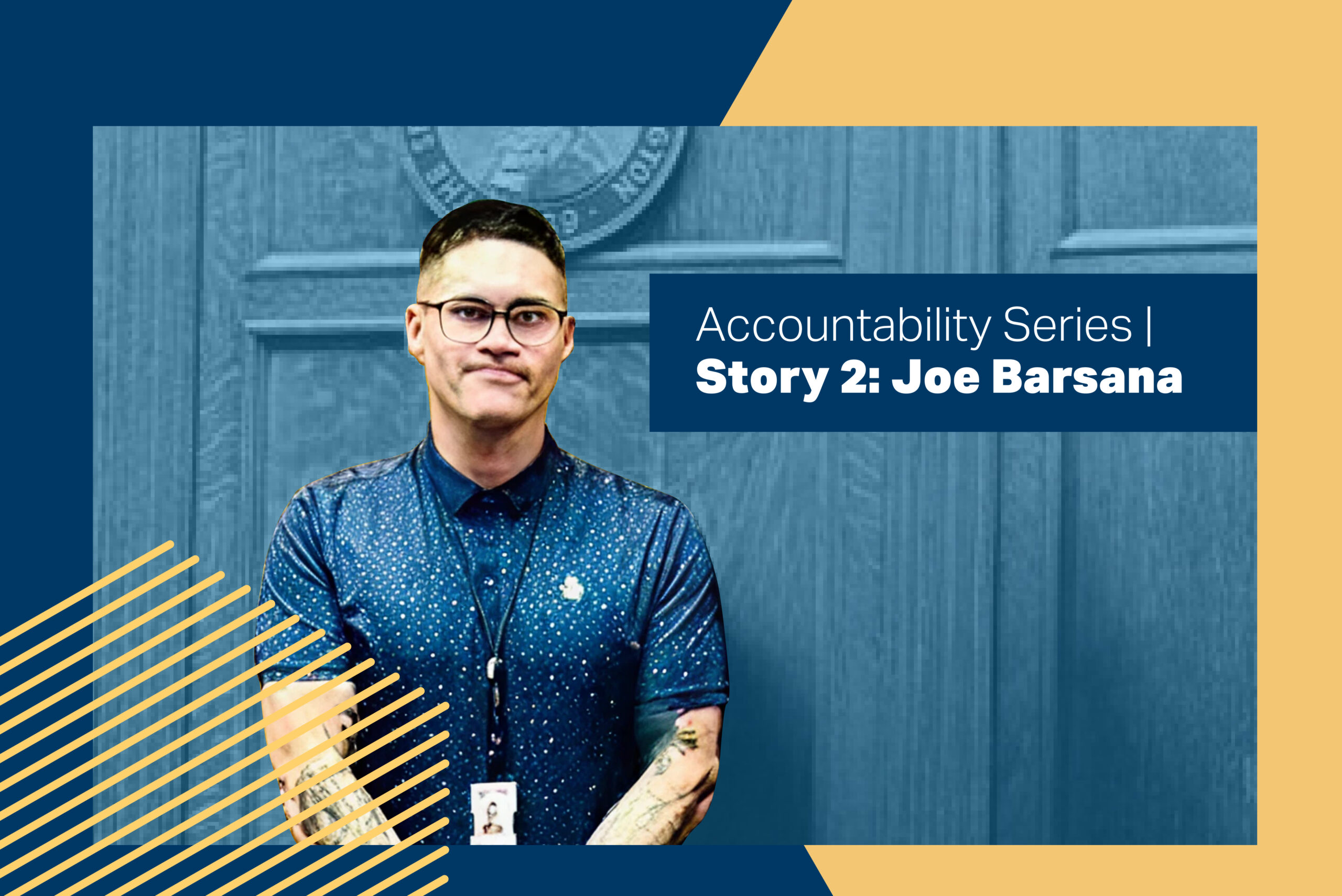Year in Review: 2023 at Pallet
December 22, 2023
Look back at our top stories of the year: from product innovation to expanding our footprint and receiving dispatches from our villages around the country, these highlights capture what Pallet achieved in 2023.
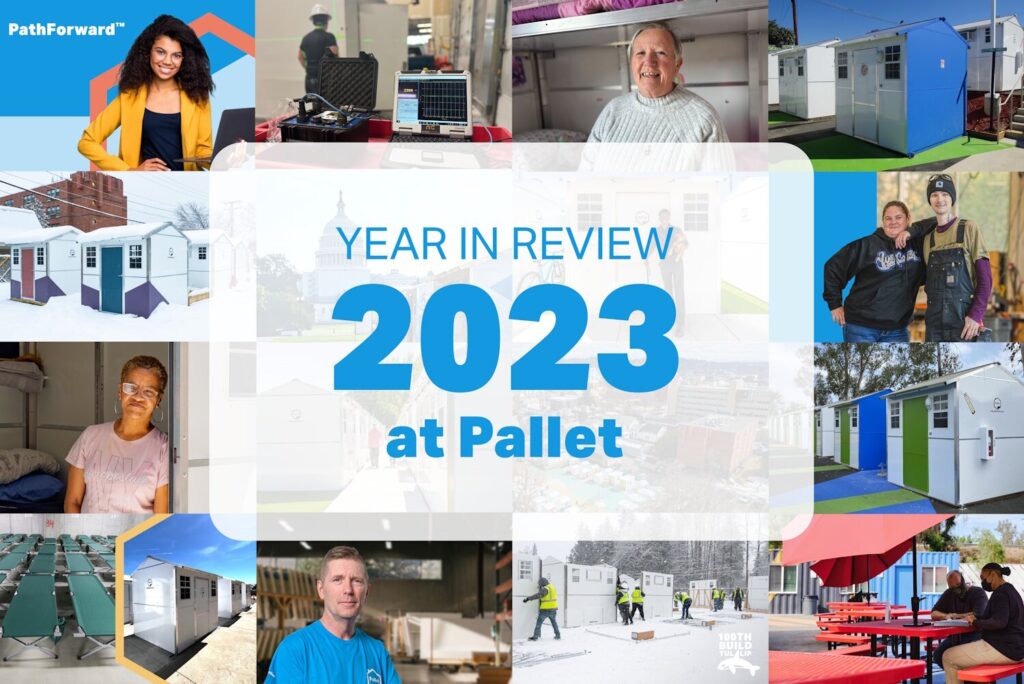
As the year comes to a close, we’re looking back at the stories we’ve shared throughout 2023. With the most recent PIT count reflecting a 12% increase in homelessness in the U.S., the need for innovative solutions like Pallet continues to grow. Over this past year, our team has doubled down on lived experience-led product innovation with the development of our new S2 product line, all the while growing our capacity by adding over 300 additional shelters and laying the groundwork to expand our response into Canada.
Here’s a round-up of our top stories from this year.
1. Pallet Builds Its 100th Village
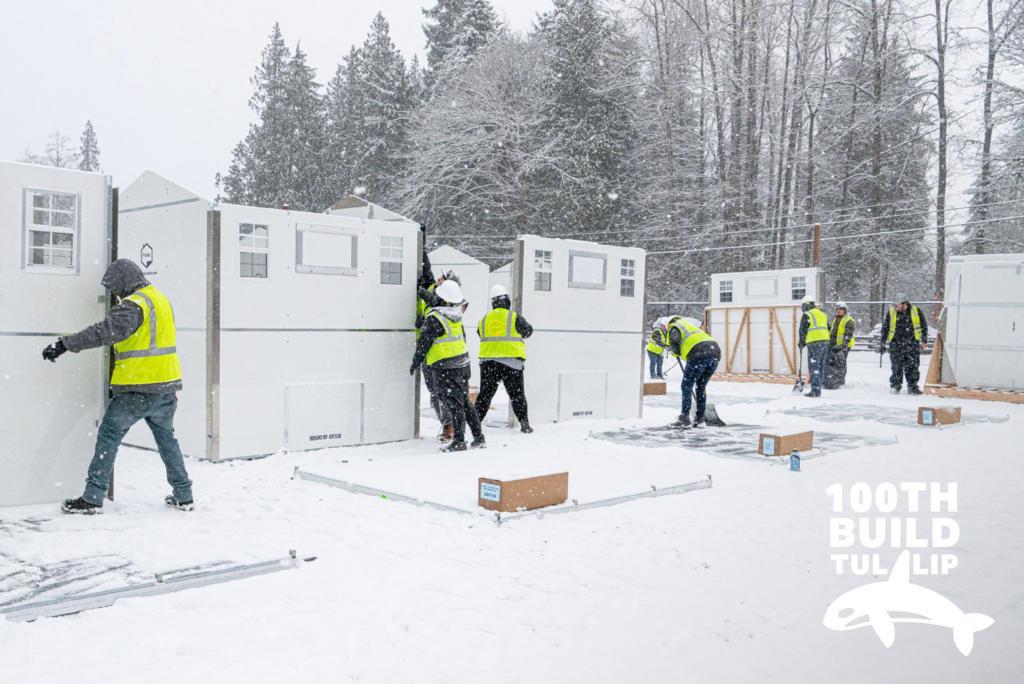
Just before Christmas in 2022, we crossed a milestone — building our 100th village. It’s located in Tulalip, WA which is just a short drive north of our headquarters. The location holds special meaning for some Pallet employees who previously experienced homelessness in the area and are now finding purpose in building transitional housing to help others in the community. The village is made up of twenty 64 sq. ft. shelters and one 100 sq. ft. shelter and was constructed in just two days by the Pallet deployment team. The Tulalip tribe manages the site and provides onsite services for community members. Residents moved into the 20 shelters early February 2023. [Keep Reading]
2. Jennifer & Alan: Closing the Loop Through Giving Back
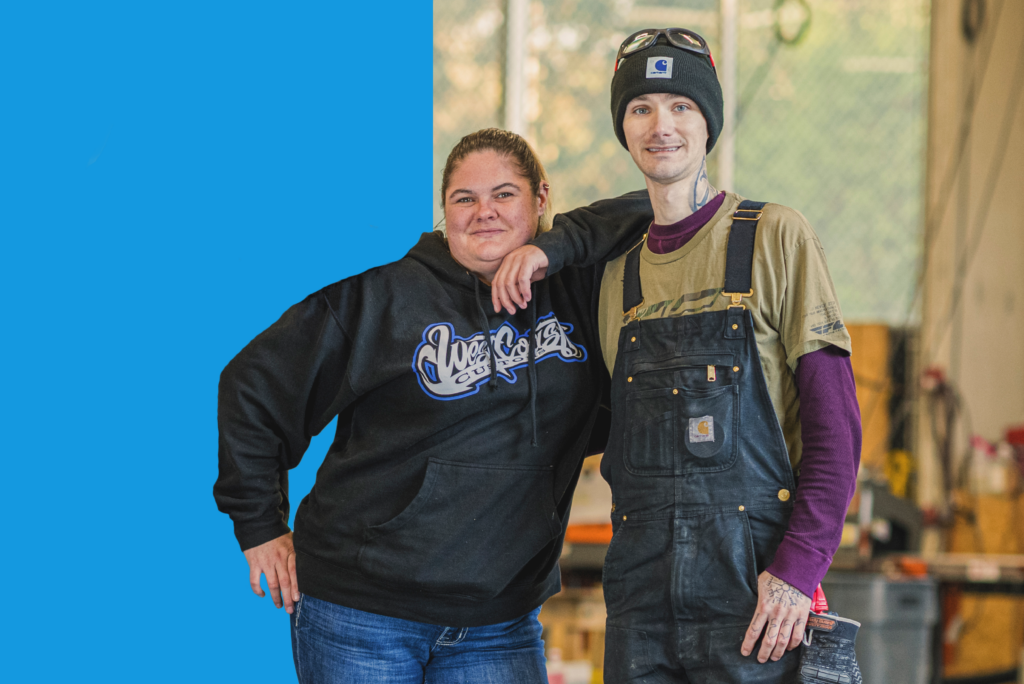
The two first met each other a handful of years ago when they were living on the streets of the Tulalip Indian Reservation in Washington. Today, they’re coworkers at Pallet. Their witty humor makes them a dynamic duo dropping hilarious one-liners as they tell stories about their past. Indeed, they can have a crowd in stitches.
“I relate to many of the people here because we can laugh about things that most people would get appalled by,” Alan says in admiration of his co-workers, many of whom share similar lived experiences.
Jennifer agrees – they have witnessed the darker sides of life. But, she says, they’ve risen above them. “It’s like, you guys, we have overcome so much and we’re killing it now. We are rock stars,” she says, laughing.
She and Alan are proud to have surmounted substance use disorder and other challenges that are, truthfully, nothing to laugh at. Right now though, they’re excited to be working on Pallet shelters for a new village on the Tulalip Reservation where they were once unhoused themselves. [Keep Reading]
3. Introducing PathForward™

There is no one solution to end homelessness. Every municipality and every community have their own specific needs. While our Pallet villages coupled with wraparound supportive services are a successful model, we understand there are other strategies to address the homelessness crisis. Working closely with cities across the country, we realize communities want to find the right solutions and know our expertise and learnings from deploying over 100 shelter villages could help them drive change. So, we’ve launched PathForward™ homelessness advisory services.
Pallet’s PathForward provides support for cities to create customized solutions with defined goals and resources like funding roadmaps, implementation plans, policy research, capacity building, partnerships, project management and more. Our service uses data-backed strategies anchored by people with lived experience. Cities can work with Pallet in a variety of ways including long-term partnerships, special projects, and one-off advice. [Keep Reading]
4. Dignity as a Guiding Principle
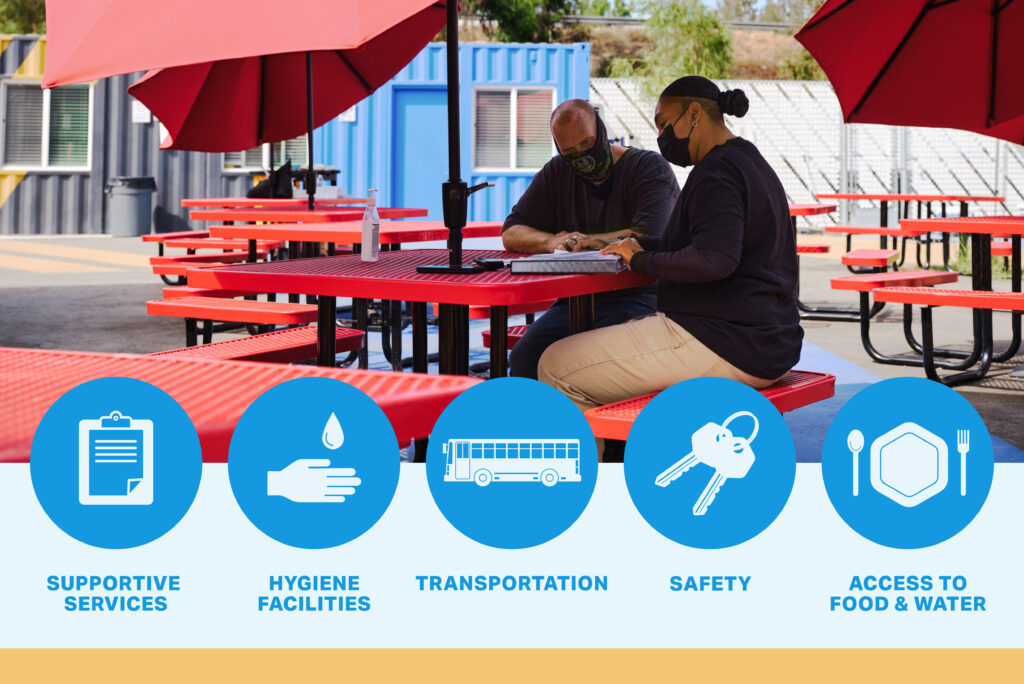
To help our unhoused neighbors transition out of homelessness and build a better future, providing shelter is one of many steps. A dignified living situation means reliable access to food and water, hygiene facilities, transportation, safety, supportive services, and more.
We created our Dignity Standards with these basic needs in mind. Guided by input from Pallet team members with lived experience, their purpose is to hold all stakeholders accountable, including ourselves, and always act in the best interest of the communities we serve. They also function as guidelines for the cities and service providers who operate our villages, intended to evolve and refine as we learn what works best. Because without dignity, who are we? [Keep Reading]
5. Rebuilding Her Life: Linda

In our Village Voices series, we shine a spotlight on residents living in Pallet shelter villages across the country and give them the chance to share their stories.
Linda Daniels was walking down the street with her bags looking for a place to sleep that night. An outreach worker happened to notice her and asked if she needed help. Within two weeks, she was a resident of the Rapid Shelter Columbia village.
A month in, Linda says the chance to have her own space to rest, to return to after a long day as a custodial worker at the University of South Carolina, and to collect her thoughts has been pivotal in being able to move forward.
“It means the world to me, because I got my own space, and I got my own place to where I can call mine right now,” she says. “I like being by myself a lot of times. So if I’m going through something, I can come in my room and think about what I’m going through and try to make things better. And I think this is a wonderful thing.” [Keep Reading]
6. Dave: Right Where I’m Supposed To Be
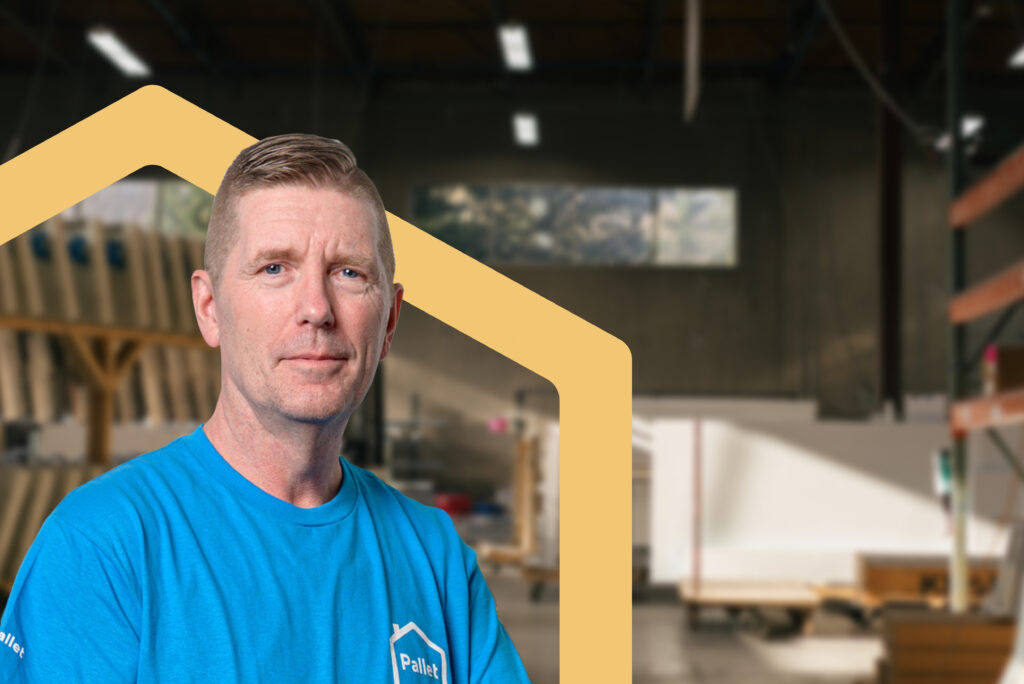
Early on, Dave had already made his own way in life. He started his manufacturing career with Boeing at age 20, got married, had three children, and bought a home for his family. After achieving all this and growing up in a large family in Everett with good relationships with his parents and siblings, it might come as a surprise to hear what was going through his mind at the hospital on May 12th, 2019.
“I was 100% resigned I was gonna die in my addiction,” he recalls. “But then that moment of clarity, that spiritual awakening, that epiphany, whatever you want to call it, hit me in there. I’m like, ‘this is not gonna be my legacy that I died with a f***ing needle in my arm sitting in the hospital. I’m gonna fight this,’ you know? And I did. And I appreciate every single day.” [Keep Reading]
7. Four Ways to Fund a Pallet Shelter Village
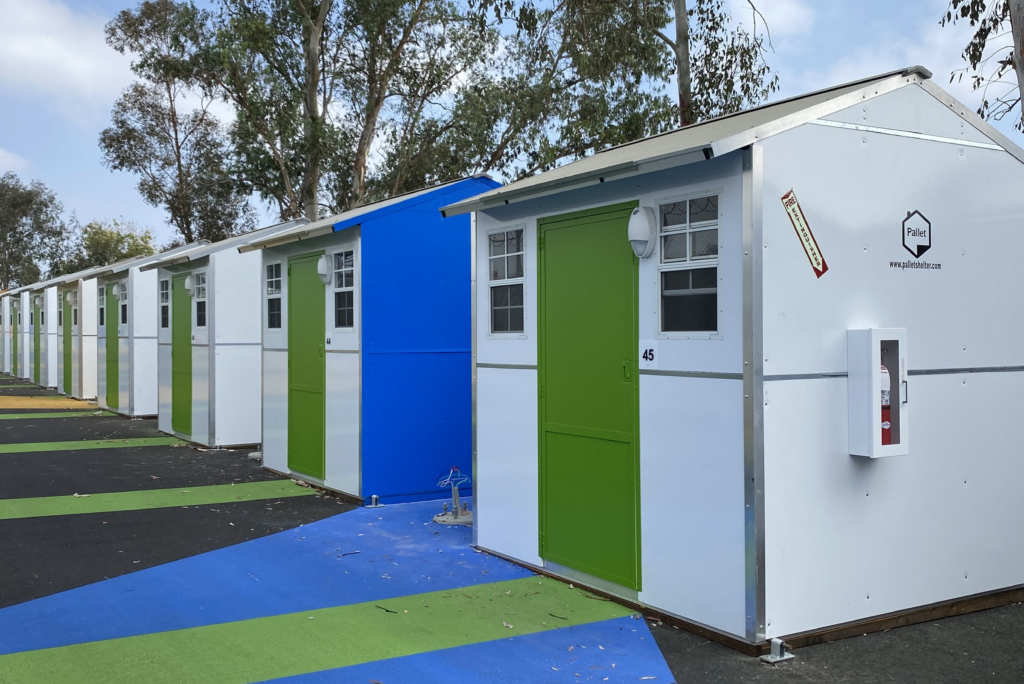
Pallet shelter villages serve as transitional spaces for people experiencing homelessness. They provide the dignity and security of private units within a community, along with a resource net of onsite social services, food, showers, laundry, and more to help people transition to more permanent solutions.
Several components to consider when building a village include identifying which Pallet shelters best suit the needs of the community, finding a site location, setting up infrastructure, and selecting a service provider. Funding is also crucial. Below are four sources that can be combined to fund the costs associated with creating a Pallet shelter village. [Keep Reading]
8. Proven Safety: Rigorously Testing and Certifying Our Shelters
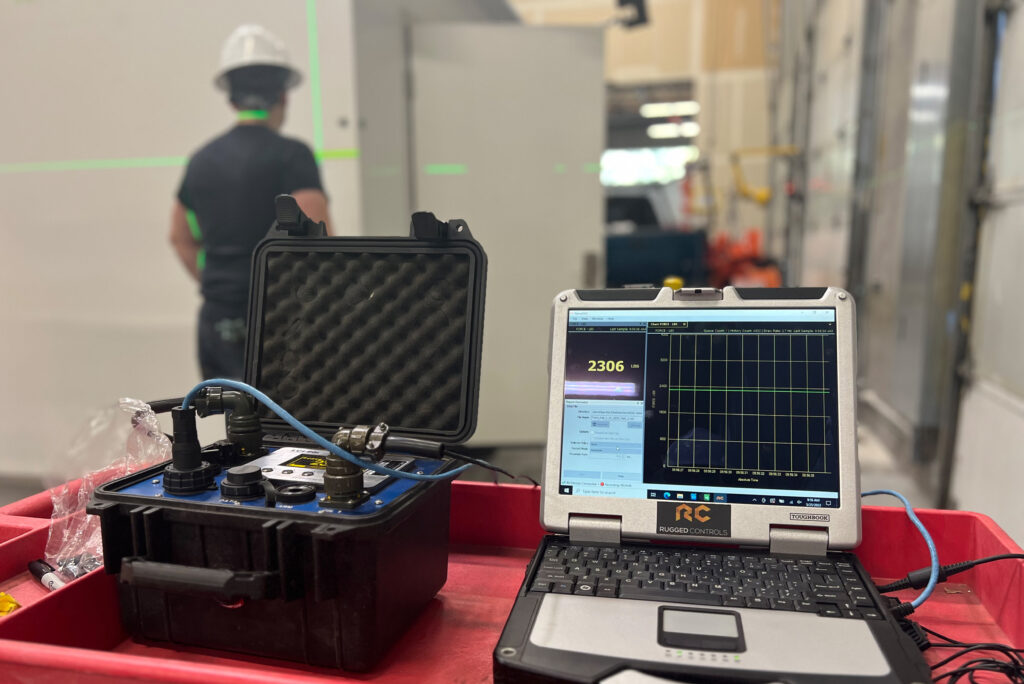
With thousands of Pallet shelters across the country, we’re constantly gathering feedback on their design from customers. This information is crucial for our in-house engineering team. It allows them to understand what our shelters must withstand in the real world.
With that knowledge, they can design Pallet shelters to meet various demands, and rigorously test them onsite.
And yet, we don’t stop there. We also third-party certify our shelters to truly validate their designs.
All this is critical because our shelters often go into storm-prone and extreme weather zones. They must reliably protect the residents who live in them, all while remaining cost-effective.
Our new S2 shelters illustrate our deep commitment to R&D. Building on our legacy of intentional, quality engineering, they advance our mission to offer safe, dignified housing for displaced and vulnerable populations. [Keep Reading]
9. Rethinking Post-Disaster Housing Solutions

By now it’s a familiar sight: cities and towns ravaged by hurricanes, tornadoes, flooding, or wildfires; homes and living spaces decimated; and people ushered into stadiums, schools, or anywhere that has the capacity for those displaced. In 2022 alone, 3.3 million Americans were displaced by disasters—and one in six people never returned to their homes.
While mass congregate shelter is often the only viable option to aid survivors directly following a natural disaster, it is not a sustainable solution for the days, weeks, or months that follow. In the variable, unpredictable period when homes, rental housing, and other living facilities are being rebuilt, there is a distinct scarcity of interim shelter options that fit the diverse needs of displaced populations.
It’s time to take a closer look at why our current system of post-disaster housing isn’t sufficient, and to provide broader, more equitable options for people displaced by natural disasters. [Keep Reading]
10. Roxana: Power in Compassion
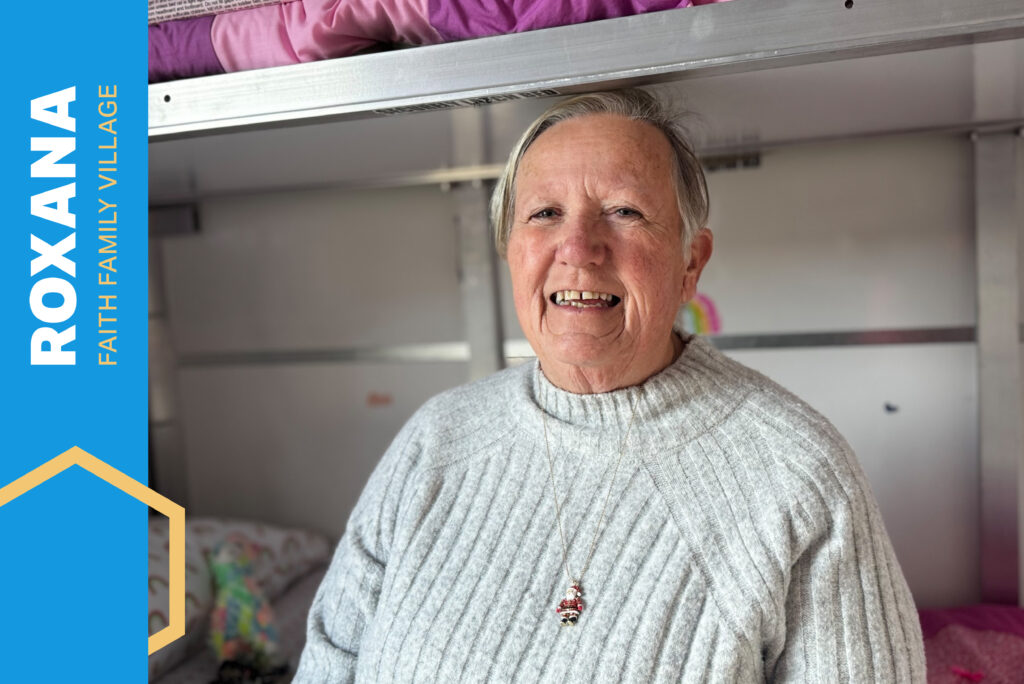
Most people would assume bringing a shelter village to life couldn’t be accomplished by a single person. Completing an undertaking of this scale is typically the culmination of a team of stakeholders overcoming various obstacles: identifying funding sources; finding an appropriate site; setting up necessary infrastructure like water and electricity; and rallying the community for support. Roxana Boroujerdi is unlike most people.
Located on the grounds of Everett’s Faith Lutheran Church, Faith Family Village comprises eight Pallet sleeping shelters and two hygiene units that will serve local families experiencing homelessness. The village will also offer supportive services that aim to create paths to employment, education, and permanent housing—alongside facilities and activities that create a safe and fun environment for children living onsite.
And even with her fair share of personal challenges, none of it would have come to fruition without Roxana. [Keep Reading]

